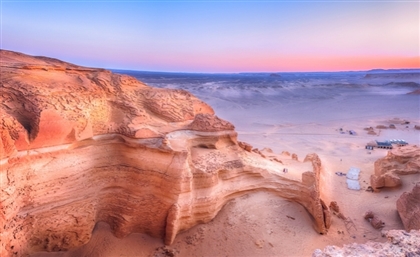Egypt's Wadi Al-Hitan to Develop Nation's First Green Road
At a length of 34 kilometres, the construction of Wadi Al-Hitan’s green road will rely on recycling and utilise a special emulsion that mixes with soil to cut down on heat emissions.

Although it’s true that it’s a valley in the Egyptian desert, just south of Cairo - one of the most densely populated cities in the world - Wadi Al-Hitan is emerging as an example of ecological preservation. Famed for the massive prehistoric whale fossils after which it is named, Wadi Al-Hitan is a UNESCO World Heritage Site that has found a place on the 2018 IUCN Green List of Protected Areas, the new global standard for protected areas in the 21st Century, and is host to the Fossil & Climate Change Museum. The area is dedicated to promoting the values of environmentalism and conservation, and it’s about to take it a step forward with the development of Egypt’s first green road.
To understand what makes a road ‘green’, it is important to note the environmental impact that is unique to roadways. Besides the obvious culprit - namely the mass gathering of vehicles spewing an all-consuming fog of fumes from their exhausts - roads are often constructed of material like asphalt which traps up to 90% of the sun’s heat, turning cities into heat sinks. Furthermore, roads fragment a habitat in a way that native species find impossible to navigate.
At a length of 34 kilometres, the construction of Wadi Al-Hitan’s green road will rely on recycling and utilise a special emulsion that mixes with soil to cut down on heat emissions, while maintaining the natural colour of the scenery that surrounds it. Compared to typical roads, this green road will be cooler and less obtrusive. More importantly, it will be a statement, paving a path for eco-tourism in Egypt, and a greater commitment to environmental renewal.
- Previous Article Dr.Sisilove or How (Not) To Diffuse A Bomb
- Next Article Egyptian Researchers Develop Nanoparticles That Can Fight COVID-19
Trending This Week
-
Apr 13, 2024
























